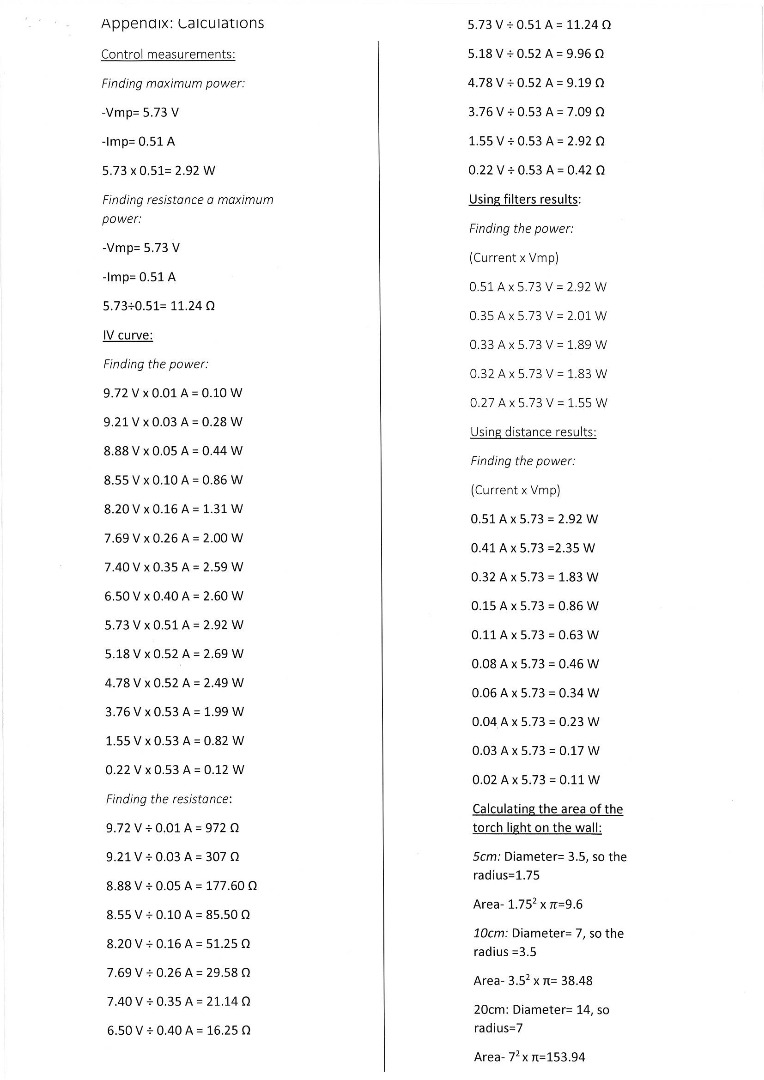Experimental investigation: Light intensity
Summary of task
Students had learned content related to atomic structure and electricity so they understood how a solar panel works. They had completed introductory practicals on setting up solar panel circuits, using data loggers and voltage/current curve for the solar panel. In this extended investigation, students were asked to explore the relationship between light intensity, distance from the source and electrical output and write a report for their investigation.
Achievement Standards
By the end of Year 9, students explain chemical processes and natural radioactivity in terms of atoms and energy transfers and describe examples of important chemical reactions. They describe models of energy transfer and apply these to explain phenomena. They explain global features and events in terms of geological processes and timescales. They analyse how biological systems function and respond to external changes with reference to interdependencies, energy transfers and flows of matter. They describe social and technological factors that have influenced scientific developments and predict how future applications of science and technology may affect people’s lives.
Students design questions that can be investigated using a range of inquiry skills. They design methods that include the control and accurate measurement of variables and systematic collection of data and describe how they considered ethics and safety. They analyse trends in data, identify relationships between variables and reveal inconsistencies in results. They analyse their methods and the quality of their data, and explain specific actions to improve the quality of their evidence. They evaluate others’ methods and explanations from a scientific perspective and use appropriate language and representations when communicating their findings and ideas to specific audiences.
By the end of Year 9, students solve problems involving simple interest. They interpret ratio and scale factors in similar figures. Students explain similarity of triangles. They recognise the connections between similarity and the trigonometric ratios. Students compare techniques for collecting data from primary and secondary sources. They make sense of the position of the mean and median in skewed, symmetric and bi-modal displays to describe and interpret data.
Students apply the index laws to numbers and express numbers in scientific notation. They expand binomial expressions. They find the distance between two points on the Cartesian plane and the gradient and midpoint of a line segment. They sketch linear and non-linear relations. Students calculate areas of shapes and the volume and surface area of right prisms and cylinders. They use Pythagoras’ Theorem and trigonometry to find unknown sides of right-angled triangles. Students calculate relative frequencies to estimate probabilities, list outcomes for two-step experiments and assign probabilities for those outcomes. They construct histograms and back-to-back stem-and-leaf plots.
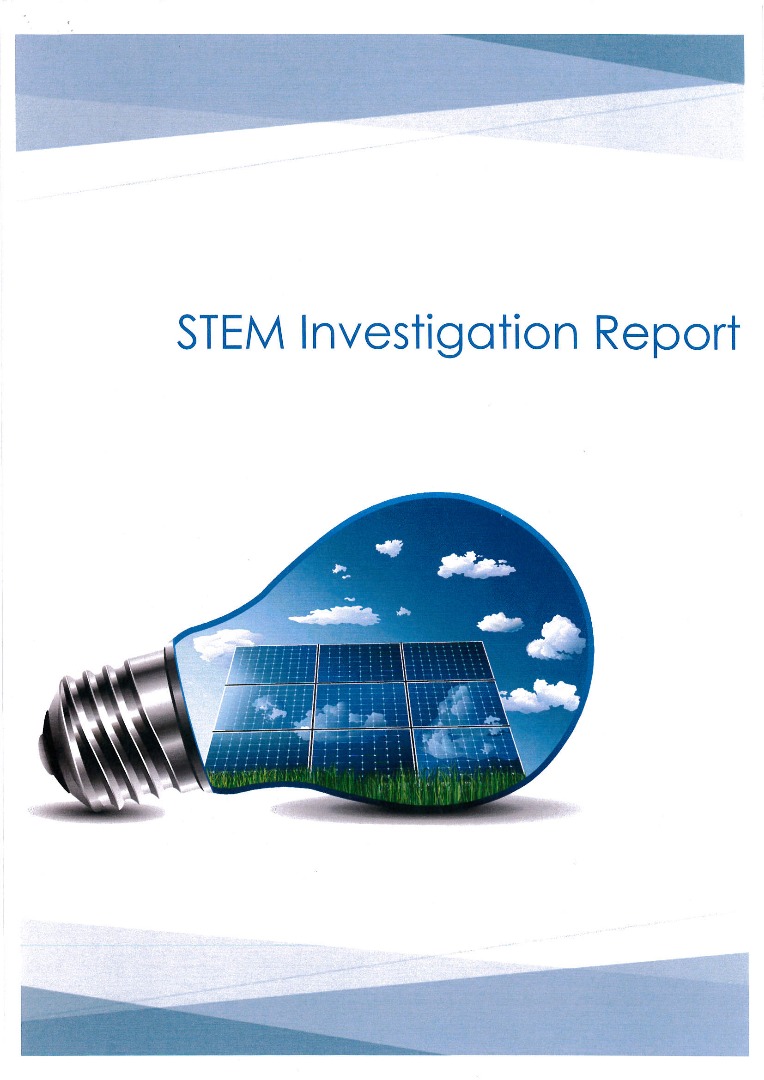
 1
Science
1
Science
Shows understanding of the principles of light absorption and establishes an appropriate hypothesis 2 Mathematics
Hypothesises about inverse relationships of the variables 3 Science
Identifies spatial diffusion of light as the key concept to consider in the relationship between power output and distance from the light source 4 Science
Explains the principle of solar cells in terms of the energy transfer from photons of light to the movement of electrons 5 Science
Identifies the variables under investigation 6 Science
Establishes the relevance of the investigation for the solution of real-world problems
-
Annotations
-
1
Science
Shows understanding of the principles of light absorption and establishes an appropriate hypothesis -
2
Mathematics
Hypothesises about inverse relationships of the variables -
3
Science
Identifies spatial diffusion of light as the key concept to consider in the relationship between power output and distance from the light source -
4
Science
Explains the principle of solar cells in terms of the energy transfer from photons of light to the movement of electrons -
5
Science
Identifies the variables under investigation -
6
Science
Establishes the relevance of the investigation for the solution of real-world problems
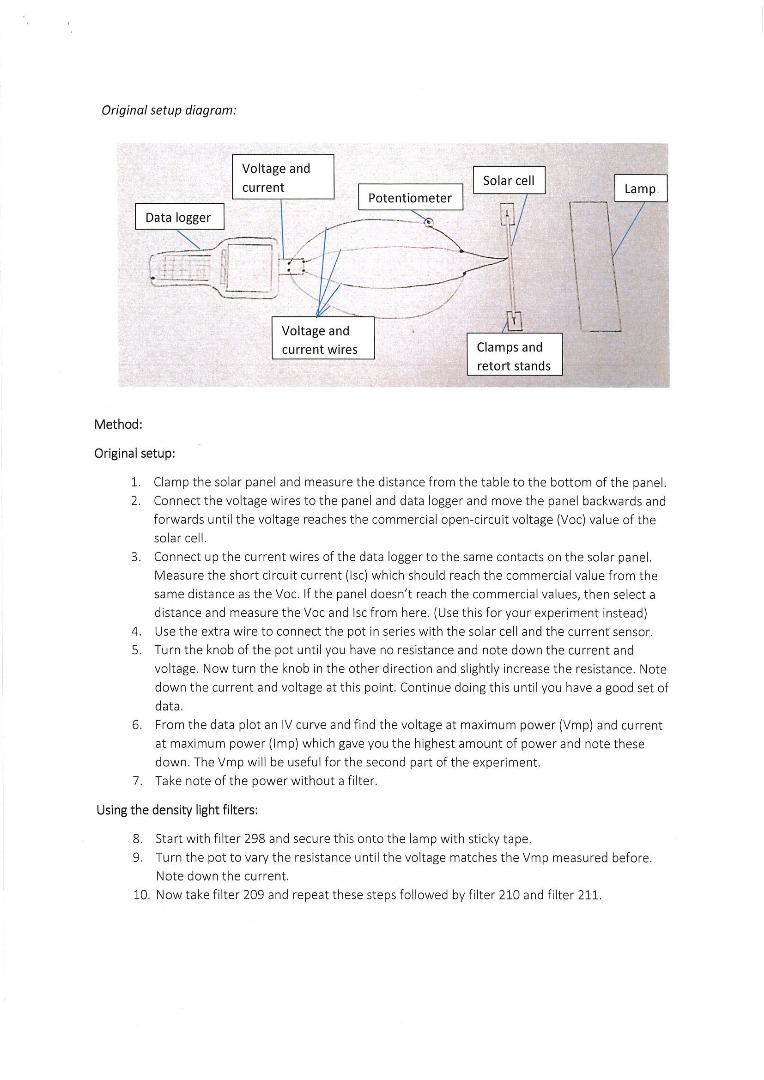 1
Mathematics
1
Mathematics
Provides a schematic diagram of the experimental set-up 2 Science
Gives a detailed description and sequence of steps undertaken in the experiment
-
Annotations
-
1
Mathematics
Provides a schematic diagram of the experimental set-up -
2
Science
Gives a detailed description and sequence of steps undertaken in the experiment
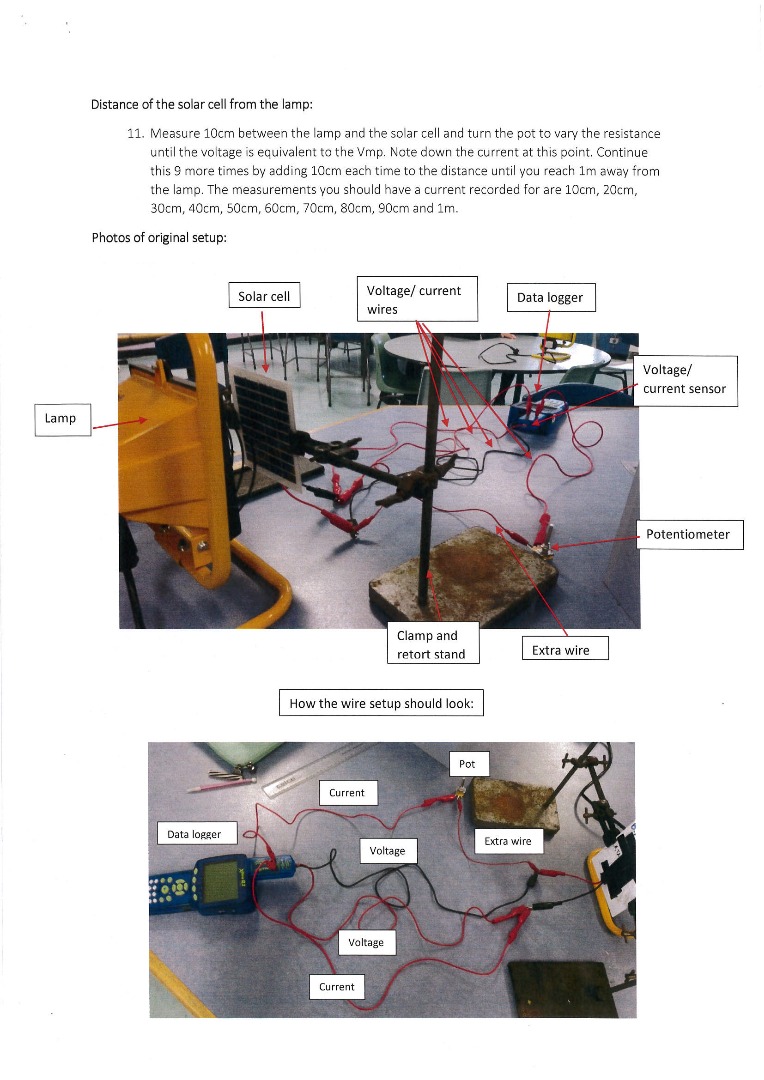 1
Science
1
Science
Provides photographic record of the experimental set-up complementing the schematic diagram
-
Annotations
-
1
Science
Provides photographic record of the experimental set-up complementing the schematic diagram
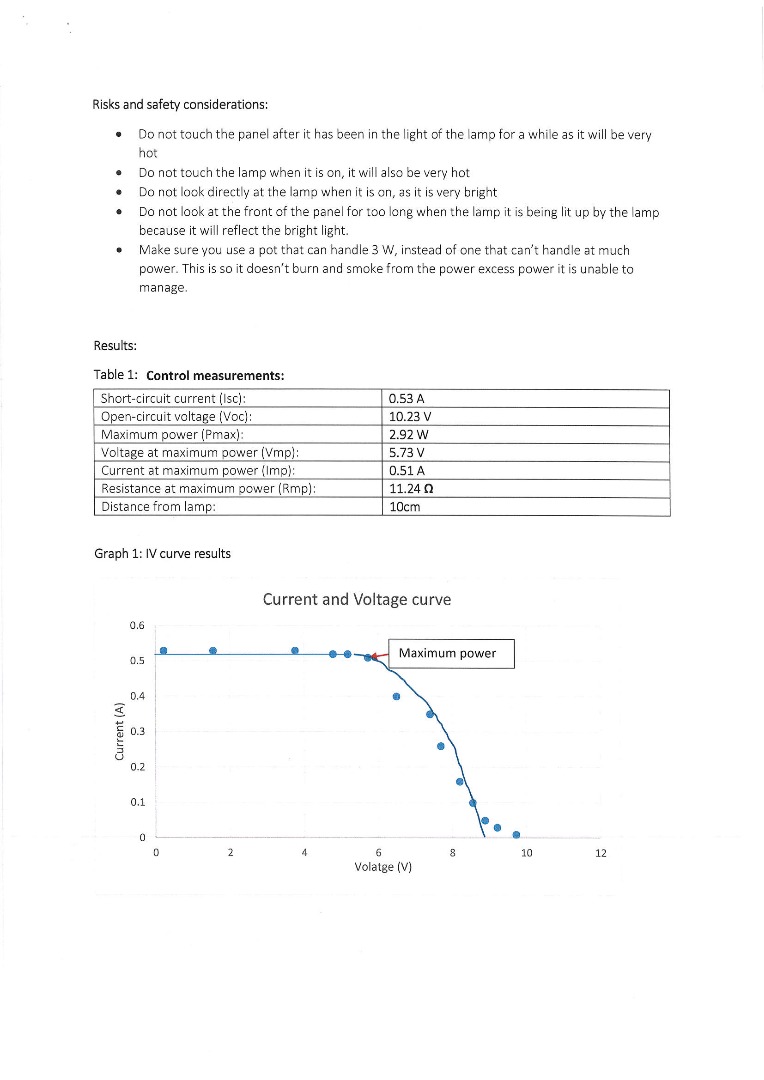 1
Science
1
Science
Provides exhaustive list of health and safety issues to be considered 2 Mathematics
Systematically collects and records experimental data in a table 3 Mathematics
Draws a graph as a curve that fits as closely as possible to a scatter plot
-
Annotations
-
1
Science
Provides exhaustive list of health and safety issues to be considered -
2
Mathematics
Systematically collects and records experimental data in a table -
3
Mathematics
Draws a graph as a curve that fits as closely as possible to a scatter plot
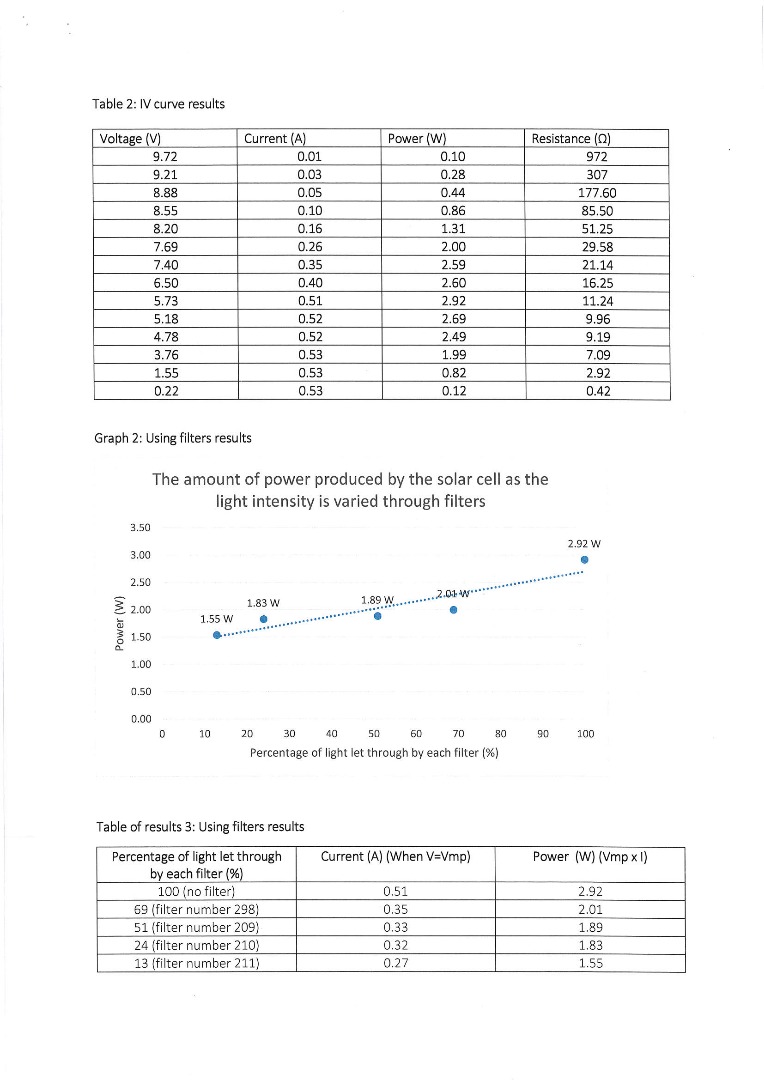 1
Mathematics
1
Mathematics
Records and displays results in an appropriate table 2 Mathematics
Identifies a linear relationship and draws a line of best fit through the data variables 3 Mathematics
Calculates power by substitution into a formula
-
Annotations
-
1
Mathematics
Records and displays results in an appropriate table -
2
Mathematics
Identifies a linear relationship and draws a line of best fit through the data variables -
3
Mathematics
Calculates power by substitution into a formula
 1
Mathematics
1
Mathematics
Identifies a non-linear trend in the relationship and draws a curve to represent the data points 2 Mathematics
Calculates values for power from data values in the table 3 Mathematics
Identifies dependent and independent variables 4 Science
Analyses and interprets the experimental results and establishes corroboration of the hypotheses
-
Annotations
-
1
Mathematics
Identifies a non-linear trend in the relationship and draws a curve to represent the data points -
2
Mathematics
Calculates values for power from data values in the table -
3
Mathematics
Identifies dependent and independent variables -
4
Science
Analyses and interprets the experimental results and establishes corroboration of the hypotheses
 1
Science
1
Science
Explains the functionality of optical filters and demonstrates understanding of the concept of light as a composition of monochromatic waves 2 Science
Clearly explains the relationship between density of the filter, transmission rate and the power output of the solar cell
-
Annotations
-
1
Science
Explains the functionality of optical filters and demonstrates understanding of the concept of light as a composition of monochromatic waves -
2
Science
Clearly explains the relationship between density of the filter, transmission rate and the power output of the solar cell
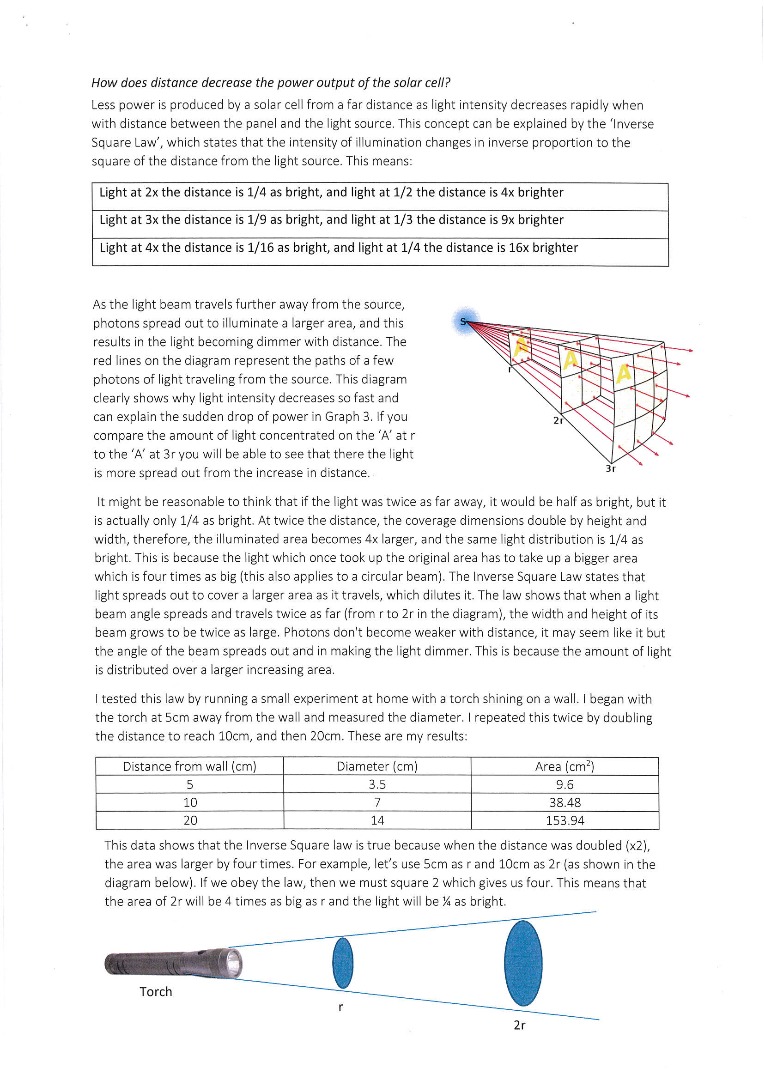 1
Mathematics
1
Mathematics
Explains the inverse relationship between the variables 2 Science
Gives detailed explanation of how the inverse square law can be understood using sophisticated scientific language and clear reasoning and supports the explanation by the choice of an appropriate illustration 3 Science
Demonstrates evidence of strong engagement, self-directed learning and deep understanding of the topic by designing an independent experiment that confirms the findings
-
Annotations
-
1
Mathematics
Explains the inverse relationship between the variables -
2
Science
Gives detailed explanation of how the inverse square law can be understood using sophisticated scientific language and clear reasoning and supports the explanation by the choice of an appropriate illustration -
3
Science
Demonstrates evidence of strong engagement, self-directed learning and deep understanding of the topic by designing an independent experiment that confirms the findings
 1
Science
1
Science
Gives detailed account of problems observed during the experiment and analyses the causes for those problems using scientific reasoning 2 Mathematics
Explains why the graph has anomalies 3 Science
Suggests improvements to the experimental method
-
Annotations
-
1
Science
Gives detailed account of problems observed during the experiment and analyses the causes for those problems using scientific reasoning -
2
Mathematics
Explains why the graph has anomalies -
3
Science
Suggests improvements to the experimental method
 1
Science
1
Science
Suggests a range of investigations that would deepen the understanding of the topic
-
Annotations
-
1
Science
Suggests a range of investigations that would deepen the understanding of the topic
